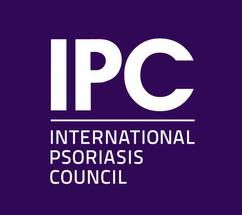International Council Of Dermatologists Introduces New Method Of Determining Psoriasis Severity

Rejecting the mild, moderate and severe labels used to categorize psoriasis severity, the IPC method calls for classifying patients as candidates either for topical therapy or systemic therapy.
A new method to classify psoriasis severity can determine the appropriate course of treatment, according to a consensus paper by the International Psoriasis Council (IPC).
The paper is published in the Journal of the American Academy of Dermatology.
“There's a lot of unnecessary suffering among psoriasis patients due to 'under-classifying' the severity of the disease. This new approach to assess psoriasis severity developed by an IPC-led Delphi exercise aims to help providers everywhere start their patients on the appropriate treatment, and sooner,” says Bruce Strober, MD, PhD, assistant clinical professor at Yale University, head of Central Connecticut Dermatology Research and secretary-treasurer of the IPC Board of Directors. Dr. Strober is the lead author on the new consensus paper.
Previous methods of determining psoriasis severity and subsequent treatment focused on identifying patients as mild, moderate or severe, depending on the percentage of body surface area (BSA) with active psoriasis or by using the Psoriasis Area Severity Index (PASI), but these approaches do not readily take into account the impact of psoriasis on special areas of the body such as face, nails, scalp, hands/feet and genitals, nor does it consider how patients have responded to topical therapies. As a result, people with psoriasis – especially those with certain mild to moderate (lower severity) forms of the condition – are denied access to critical systemic treatments to control symptoms.
The International Psoriasis Council method of assessing psoriasis severity is a treatment-first approach that significantly simplifies the process of getting psoriasis patients on the right medication for their disease level.
Rejecting the mild, moderate and severe labels used to categorize psoriasis severity, the IPC method calls for classifying patients as candidates either for topical therapy or systemic therapy.
To qualify for systemic therapy, patients must meet one or more of the following criteria:
- Psoriasis lesions on 10% or more of their body surface; OR
- Psoriasis lesions on sensitive areas of the body (i.e., hands/feet, face, genitals, scalp); OR
- Topical therapy failed to control symptoms.
"So far patients with less involvement than PASI 10 or BSA 10 were not eligible for a treatment with a biologic in many countries, although they may suffer quite a bit from their disease. This new approach to classifying psoriasis severity furthers IPC's work to help improve the health of psoriasis patients around the world," says Peter van de Kerkhof, MD, PhD, chief medical officer of International Psoriasis Council.
From this consensus paper, IPC intends to work with health insurance entities, health care providers and with stakeholders involved in the drug development process to integrate this new method of assessing psoriasis severity into standards of care for psoriasis with the ultimate aim to increase access to care for patients worldwide.

Facebook Comments